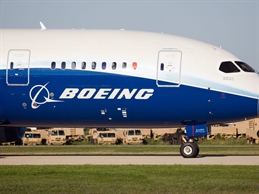
Boeing said airlines in the Middle East will require 3,000 new airplanes valued at US$700 billion and aftermarket services such as maintenance and repair worth US$740 billion, with the region positioned to capitalize on the recovery of regional and international travel and cargo demand.
Boeing provided the estimate in its 2021 Commercial Market Outlook (CMO), a forecast of 20-year demand for commercial airplanes and services.
It said Middle East passenger traffic and the region’s commercial fleet are projected to more than double over the 20-year forecast period.
More than two-thirds of airplane deliveries to the Middle East will accommodate growth, while one-third of deliveries will replace older airplanes with more fuel-efficient models such as the 737 MAX, 787 Dreamliner and 777X.
“The Middle East region’s role as a global connecting hub continues to be important for developing markets to and from Southeast Asia, China and Africa,” said Randy Heisey, Boeing managing director of Commercial Marketing for the Middle East.
“The region has been a leader in restoring confident passenger travel through multi-faceted initiatives that aid international travel recovery.”
Air freight “area of opportunity”
Boeing noted that air freight represents an ongoing area of opportunity for Middle East airlines, with the freighter fleet projected to nearly double from 80 airplanes in 2019 to 150 by 2040.
Notably, air cargo traffic flown by Middle East carriers has increased since 2020 by nearly 20%, with two of the world’s top-five cargo carriers based in the region.
The 2021 Middle East CMO also includes these projections through 2040 which says to accommodate increased passenger and cargo traffic, airlines are predicted to grow their fleets to 3,530 jets.
The region will continue to see robust widebody demand, with 1,570 deliveries supporting a growing network of international routes.
The current single-aisle fleet of 660 airplanes is forecast to nearly triple to 1,750 jets.



